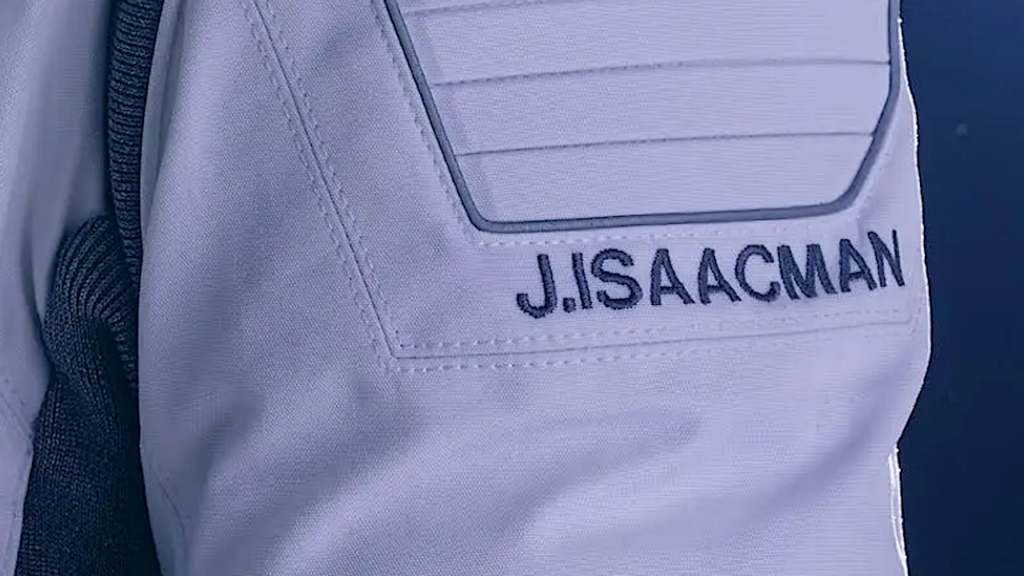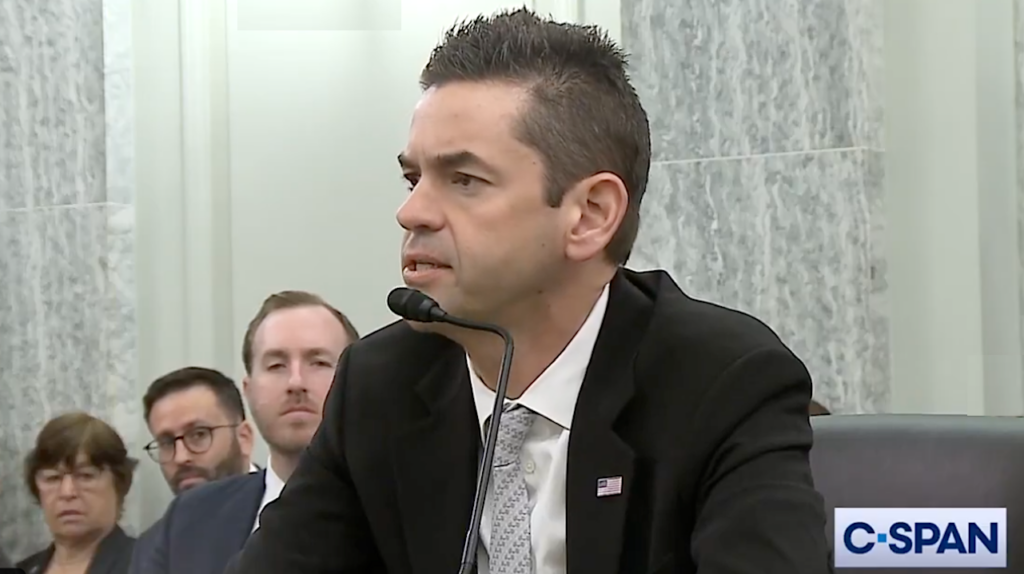NASA Forgot To Ask For SLS Upper Stage Money

NASA working towards September 2018 SLS/Orion launch, Space News
“Honeycutt said the SLS program is making progress on the Exploration Upper Stage (EUS), a more powerful upper stage planned for future SLS missions after EM-1. The EUS has also become a political issue, as Congress provided additional funding and direction for EUS work not requested by the agency in its recent budget requests. Congress directed NASA to spend at least $85 million on EUS in the fiscal year 2016 omnibus spending bill, and have it ready in time for the second SLS mission, EM-2. NASA, however, did not request enough funding in its fiscal year 2017 budget request to support development of the EUS in time for EM-2, even as it directed agency engineers to stop work on human rating the interim upper stage that will be flown on EM-1.”
 Keith’s note: NASA did not ask for the money to build EUS and they have stopped working on ICPS. Right now SLS has no upper stage. And yet they claim that they are going to meet their launch dates. Yea, this sort of stuff really happens in Washington.
Keith’s note: NASA did not ask for the money to build EUS and they have stopped working on ICPS. Right now SLS has no upper stage. And yet they claim that they are going to meet their launch dates. Yea, this sort of stuff really happens in Washington.









From another discussion which pretty much sums up the SLS project thus far:
“SpaceX sells Falcon 9 launches for a bit over $60 mil each, and plans to sell Falcon Heavy launches for $90 mil each. The money spent on the SLS this year could have bought approximately 33 Falcon 9 launches or approx 22 Falcon Heavy launches (when it flies late this year or early next year.) This is called the “opportunity cost” of the SLS’ development budget in FY 2016.”
“NASA pays SpaceX $30 mil extra for a Dragon launch ($90 mil vs $60 mil.) For $1,270 mil they could either do one years development on the Orion or buy ~41 Dragon uses.”
Agreed.
Besides, we can’t get a manned mission to Mars with a single SLS launch, so it’s going to have to be done via in orbit assembly/docking/berthing/refueling/etc. Pretending that an HLV solves this problem is delusional.
But it can be done in much fewer launches and with less mission complexities with an HLV. Pretending FH can do this all by itself is misguided. If FH could do a human Mars mission all by itself why is SpaceX waiting to develop BFR before going to Mars?
Perhaps. SpaceX is planning on making more info on their Mars aspirations public later this year. If they keep the BFR route, it will surely have a reusable first stage and quite possibly a reusable second stage. Another possibility is a Falcon Heavy with a Raptor powered LOX/methane upper stage.
But, with a limited number of VAB bays, MLPs, and only a single launch pad, SLS really can’t physically support a mission which requires more than a few launches in rapid succession without some fairly massive investments in ground infrastructure. Also, it’s current projected flight rate is once every other year (this could be increased, but not without spending billions more each year).
A fully expendable throw back using slightly evolved 1960s and 1970s technology is quite simply a dead end due to unworkable economics.
Wow…I never thought about that. Only one high bay in the VAB is being modified to handle SLS processing. They couldn’t process more than one at a time if they wanted to!
What they’d have to do is process an SLS, then store it in an empty high bay. But even then there is a limit. I’ve read NASA is trying to lease out one of its VAB high bays (similar to how SpaceX is leasing one of the former shuttle pads).
Actually, from what I’ve just read, both High Bay’s 3 and 4 will be needed for SLS processing (#4 will be used to process equipment before installation on SLS in #3). So, if NASA leases out another of the VAB high bays, this would leave only one high bay empty for storing an already processed SLS.
Assuming two SLS vehicles in the VAB and one on the SLS launch pad, NASA should be able to launch three SLS vehicles in rapid succession. If we assume processing an SLS for launch isn’t terribly time consuming, perhaps the limit could be four (process the fourth while launching the first three).
And if we assume a spare #3 Billion or so.
NASA is, indeed, looking to lease out a high bay in the VAB. The client would be Orbital-ATK for their notional EELV-class vehicle. This would likely use two Shuttle/SLS-type solid booster segments in each of its first two stages. That’s pretty much a short Ares 1 with the solid booster split into two pieces. The thing would be big and heavy enough to require use of a VAB high bay to assemble and an MLP and crawler-transporter to move it out to LC-39B just like the original “corndog” did.
Given that the maximum SLS production rate at Michoud is only two cores per year, that four-SLS “salvo” would require two entire year’s worth of production. I believe the current Design Reference Mission to Mars would require between 9 and 12 SLS launches, though I’m not clear on exactly which SLS models and lift capacities are assumed in those numbers. SLS Block 2 seems increasingly unlikely ever to be built and the Block 1B only has 3/4 the lift Capacity of the Block 2. If the assumption was 9 to 12 Block 2’s, that’s 12 to 16 Block 1B’s. Given the production limits, that would mean we could send an expedition to Mars roughly once per decade. I don’t think that’s a recipe for success.
What’s the limiting factor on making these critters, I wonder? A single spin weld machine, not enough floor space, or?
There’s only one of the monster vertical welding machines at Michoud. But it’s fed by barrel and dome welding machines that are only comparatively less gigantic. To build more than 2 SLS cores per year, it’d be necessary to increase the number of all three kinds of machines and probably many others that are, in turn, subordinate to the Big 3 welders.
The idea, popular in certain fever swamp precincts of the space enthusiast community, that SLS cores are just modest upscales of the Shuttle External Tank is simply bonkers. An SLS core stage is over three times as massive as a Shuttle ET (85.3 vs. 26.5 tonnes) and has a lot more parts including four RS-25 engines. It’s not exactly a matter of putting a few more factory rats on the payroll and running an extra shift now and then to get more SLS core stages out the door.
But the real limitation is engines. There are exactly four flight sets of engines currently extant. AJR has a recently acquired contract to put a re-engineered version of the RS-25 back in production but that isn’t due to produce anything for the next six or seven years.
What the achievable production rate will be once the new-production RS-25’s start being delivered is unclear. The original Rocketdyne production line for the RS-25 ran for more than 20 years but produced only 47 engines. If AJR can’t do any better with the resurrected version of the RS-25, it may have its hands full just turning out enough engines to support the currently contemplated every other year flight cadence of SLS. AJR would have to do three or four times as many engines per year to support even the current maximum SLS production rate of two cores per year.
I don’t see the SLS production infrastructure ever being able to handle even a very modest “salvo fire” mission design.
There is currently only one MLP configured for the SLS Block 1B converted from the ill-fated Ares-1X configuration.
.
This I did not know. So, it would require building more MLPs to realistically launch more than one SLS in “rapid” succession (such as was done with Skylab 1 (orbital workshop) and Skylab 2 (first manned CSM mission).
There are, I think, only three MLP’s in existence.
If Orbital-ATK grabs one to support their notional EELV-class “Son of Corndog” rocket, that leaves at most two MLP’s to support “salvo firing” of SLS’s.
SX announced they will send a Dragon 2 to Mars with a Falcon Heavy in 2018. All the pieces are available or in active development. They will probably be delayed from their date, but it will be years before NASA comes close to matching it, if they ever.
Red Dragon will be a fantastic achievement. That said it is nowhere near a manned mission though.
I agree, you would be in very tough shape if you had to ride in a capsule that distance. There would no returning home and there would have to be cargo waiting for you because you would be out or close to it, of water and rations.
You’d be out of life support well before you hit the half-way mark even if you were alone. Of course the same is true of Orion and Orion couldn’t even land your wizened corpse and provide you with a nice monument like Red Dragon could.
ESPECIALLY if NASA is just buying the launch services to move X amount of hardware to point A or B at FIXED prices from commercial providers then NASA would have even more funding for projects to launch.
No such thing as BFR any longer nor has it been around for quite a while.
Cheers.
Really? Then you need to tell Elon Musk. I am sure he will be surprised.
Well since FH hasn’t flown yet the money spent this year couldn’t have paid for 22 FH launches. Also since SpaceX has so many commercial customers it couldn’t have bought 33 F9 launches either (or 41 Dragons). Heck, even in 10 years SpaceX likely won’t have that many launches total in a one year period.
Right now there is not enough FH volume to replace SLS. (that also doesn’t take into account that your mission complexity just increased by a factor of 3 given that you have to break a single SLS sized payload into 3 chunks).
“Right now there is not enough FH volume to replace SLS”
Right now there is no known payload for SLS (besides Orion/OSM), and as such there is no known volume requirement for a mission that makes SLS necessary. Maybe when there is some sort of mission architecture where x amount of volume is required this argument can be made. Add in that SLS/Orion eats the funding that could be used for this architecture until the funds for ISS becomes available in the mid 2020’s.
Keep in mind I am not a hater of the SLS because it wont be a competent launcher, but because it is overly expensive for its capabilities, and that it is a congressionally mandated jobs program. 30 years ago NASA building rockets made a lot of sense, but now that there is an industry capable of doing it for much cheaper it makes little sense.
If congress started funding a new optical space telescope with a 8 meter lens, to replace hubble, it would be ready in ten years when SLS is ready.
Ha! That’s a big IF for congress to fund. But If JWST is anything to go by it wouldn’t even be ready to launch until the mid 2030’s.
LOL .. I was being facetious .. the pro SLS crowd just doesn’t get it.
Don’t mean to step on your Onion moment here, but the University of Arizona has a mirror lab that can cast highly profiled telescope mirrors up to 8.4 meters in diameter; coincidentally, the same diameter as the core stage of SLS. A mirror that size weighs 36,000 lbs. With a payload fairing of, say, 10 – 12 meters, SLS could easily launch a complete telescope based on such a mirror into LEO orbit.
Of course FH could do the job too, and a lot cheaper, though it would need a seriously oversize payload fairing. And, unlike SLS, at least part of the rocket would be recoverable.
I would have rather seen that get funded then SLS and Orion. I would like to see an optical mirror designed that was segmented like the James Webb with each segment and 8 meter mirror.. 56 meter optical mirror we could see algae blooms on other world’s oceans
I’m sure such a telescope could be built and launched on FH and/or BFR for way less than the 10 billion it’s going to cost by the time JWST is on station.
Agreed, It would have been cheaper to just keep launching new Hubble scopes rather then fix in orbit.
I agree with you on that point. The Falcon heavy needs an upgraded faring.
If the raptor engine pans out for a high energy upper stage I hope they increase the faring then.
I get this mental image of Rocketdyne’s J-2X, looking a lot like sad Keanu Reeves, who has been boxed up, shoved into a crate, and stored and forgotten in that giant warehouse at the end of Raiders of the Lost Ark. Although, this could be due to the 4 Ballast Point Sculpin IPAs I drank tonight, while watching the Red Sox.
This is not something that can be blamed on the rank and file at NASA. No one at NASA “forgot the upper stage.” This is the work of the Obama administration and their OMB who didn’t want SLS in the first place. They choose how much and for what NASA is allowed to ask for. Bolden is forced to defend this because he is an administration appointee.
It is all politics.
The executive branch didn’t want to fund the congressional hobby rocket because they will only fly it once in a while. Like any hobby congress just wants the shiny toy hobby rocket. Not an actual domestic transportation system.
The SLS SHOULD be cancelled. It’s a massive waste of money and has no future. They won’t be able to afford this thing IF it ever does fly. You can’t fly a rocket of that size only once every few years and expect it to be affordable–not when SpaceX will be launching Falcon Heavies that have 76% of the SLS launch capacity for 1/6th the price.
Instead of trying to predict the future I think both SLS and FH (and eventually BFR) should be allowed to finish development and show their worthiness on the field.
FH may turn out to be a better option than SLS. The opposite may happen. Maybe the best option will turn out to be tag teaming SLS and FH. At this point we just don’t know.
Let them all fly and then instead of future predictions the choice of which LV to use can be made on actual flight history.
The reality is that NASA has no requirement/need for a super HLV, nor its costs. NASA’s HSF missions are 70+% propellant, so they do need the ability the transfer and store the liquids on orbit. The increased flight rate will reduce launch costs for the DOD/NASA and hopefully create new markets. The shift of LV $ to payloads enables the new missions.
Yes a shift from SLS, coal, corn, oil, ethanol will cost jobs but will create the same or more with the alternatives. A shift from corn will cut health care costs too. It’s the right thing to do. Some politicians favor education $ to retrain too.
Do ‘politics’ always mean the wrong choices?
Your logic is continue to waste billions of dollars on a rocket NASA has no requirement for, and that was designed by Congress? That’s a massive waste of funds since with a fraction of those funds, SpaceX can have Falcon Heavy ready. NASA is doing this backwards. They need a mission first, then identify the hardware they need to complete that mission–like they did with Apollo.
I believe that’s the way it will happen. By the time SLS actually starts flying crew, we’re going to have a lot of history with Dragon 2 and with Falcon Heavy. At that point, the pressure is going to be on the politicians. A lot will depend on how the economy is doing, and how much NASA can afford to keep the Beast alive.
NASA internal studies have recommended that commercial firms be used to fill a propellant depot on orbit and launch BEO missions to the depot to fuel for deep space operations. The safety and mission assurance office thinks it’s more reliable than launching full up vehicles that would have to loiter in orbit for a month or two for additional HLV launches.
Everything of consequence about SLS-Orion is 30 to 40 years old. Falcon Heavy is a current design. The mysterious BFR is an even newer design. The temporal distance between SLS and her two SpaceX competitors is roughly the same as the temporal distance between the Royal Navy’s HMS Dreadnought of 1875 and the HMS Dreadnought of 1906. I imagine a “shootout” between SLS and either of the SpaceX craft would be about as lopsided and quickly-ended a contest as would have been a main battery slugging match between the 1875 and 1906 bearers of the name Dreadnought. Anyone looking at the specifications of the respective ships could easily discern the prohibitive favorite. The same is true of SLS vs. FH and/or BFR. There is no need whatsoever to hold any sort of contest to settle an issue that is only an issue to delusional supporters of the indefensible SLS.
Hey, I think SLS will have modernized avionics. They stopped making the vacuum tubes used in the shuttle program… Just kidding!
You’re not that far off, actually. The original RS-25 engine controllers were based on a hardened Honeywell processor of 1970-vintage that used plated-wire memory, a technology about two generations newer than vacuum tubes.
These were replaced at some point – can’t seem to find out exactly when that was – by newer controllers based on the Motorola 68000 processor. I once had a PC based on this processor. I bought that machine in 1981, the same year the Shuttle first launched.
A new controller for the RS-25 has been developed as part of the SLS program using somewhat less antique-ish electronics and tested at Stennis. It’s based on the design of the new controller NASA developed for the J-2X engine before that project was shelved. Try as I have, I can’t find any information about the internal economy of this controller including the type of processor it’s based on.
Keep in mind that “new controller” is a relative term. That “new” modular controller for J-2X and then RS-25 seems to have been designed eight to ten years ago.
One of the main reasons SLS has to lift so much isn’t the spacecraft hardware, it’s all the fuel. NASA should get smart and outsource the building and fueling of an in orbit fuel depot.
Lets assume you hire SpaceX to launch the fuel to an orbiting outpost–hell, it could even be located at the ISS. At 1/6th the cost to launch, and 75% of the SLS lift capacity, you could launch a lot of fuel and hardware for the cost of a single SLS. With the need to lift all the extra fuel now removed from the picture, SLS could use its massive capacity to lift hardware (if a need existed at all to even have the SLS), which would refuel at the ISS. Once ready, the ISS would serve as a good launch point to the Moon or Mars. It would also give the ISS a much needed boost in importance, traffic, use, and international cooperation.
If it’s not worth doing, it’s not worth doing well.
Finally someone noticed.
Now the real question, why.
Politics. The Obama administration doesn’t want to give SLS the resources it needs. They have to cut something to get $1.3 Billion instead of $2 Billion. They decided to put one of the most important items (EUS) on the chopping block. Congress will restore it in the final appropriations.
Do you read what you post? Really? This is pork pure and simple. Btw SLS hasn’t flown either but one thing is pretty certain and that is that FH will fly before SLS.
Cheers
Ya because Obama doesn’t want to pour more money down the SLS rat hole it is his fault. LOL
Congress can appropriate how ever much they want for their hobby rocket.
Congress will only fly their hobby rocket once every year or two so you can see why their hobby, needs more money.
The point is that it was the Obama Administration, not NASA, that is responsible for the lack of requested funding for the upper stage. No one at NASA “forgot” anything.
The Obama administration submits a SUGGESTION .. congress has routinely ignored THIS president’s budgets from day one.
But SLS is a rat hole that the Administration is smart to be underfunding
Congress’s insane pull back on commercial crew funding to feed that monster is the problem.
You know this…how?
Seriously the White House writes budgets with that much detail?
Because the lack of money for the EUS is in the budget request which has to go through OMB.
Do you hate NASA so much that you actually believe they would “forget” to ask for money for the EUS? The budget request is over $700 Million less than what Congress gave them last year. You have to cut something to achieve that.
Look I get it. NASA has bureaucratic issues, contract issues etc. That said there is no reason to insult the hard working people at NASA just because you don’t like what they are working on.
Yes I do read what I write. You failed to grasp my point.
The title of this post implies that NASA and the SLS program somehow forgot to ask for upper stage funding. My point was that no one forgot anything. The reason funding was not asked for was because OMB didn’t want to fund the SLS upper stage.
Pretty much everything in government can be considered pork. I am sure the Reps from California are happy that SpaceX is getting money from government contracts.
Sure FH will fly about a year before SLS (with about half the capacity to LEO and about 1/3rd to BEO). What difference does it make? It can’t do human BEO missions all by itself (except for a lunar flyby on a free-return).
“Pretty much everything in government can be considered pork.”
Yikes.
Because pretty much all Congresspeople want to see government money in their districts. My point was that if you consider SLS money pork then you have to consider the money for SpaceX as pork too. The Congressmen representing California are no more virtuous than the ones representing Alabama.
“Pork” or “Pork Barrel Spending” is quite a nebulous term which can be applied to many different things depending on the perspective of the person/organization using it.
For my part I see a clear difference between the funds that SpaceX gets for its services and what SLS gets for itself. This difference is in the fact that SpaceX is getting paid for a service that is required (COTS, CCDev). We needed these services to fulfill a function that we lost with the retirement of the shuttle. I might frame this a bit different if the shuttle was canceled in order to fund SpaceX (jobs in the CA 35th congressional district), but that’s not the case.
The funding for the SLS on the other hand is for a service (HLV) that is not necessary based on several reports (ie Augustine Commission), but is also being directed to specific districts where the cancelling of the shuttle was going to hurt the most. Not to mention the contracting methods between these services.
So the difference for me with defining one as pork barrel spending and the other not is need and how/where the funding is spent. If SpaceX was based in Michigan (no committee members in either the Senate or House for NASA funds), I believe they would still have been selected COTS and CCDev.
It [FH] can’t do human BEO missions all by itself (except for a lunar flyby on a free-return).
SLS can’t do much in the way of BEO missions by itself either. It can put Orion into a DRO around the Moon. But it can’t land and it couldn’t carry a separate lander at the same time either even if one existed, which it doesn’t. Neither the Block 1 nor 1B (Block 1 + EUS) variants of SLS could get even an Apollo mission off the ground as both are well short of the late Saturn V’s capabilities. The SLS Block 2 has no scheduled availability date because not even SLS’s arch-defenders in Congress have seen fit to budget any money for its needed Advanced Boosters. That puts SLS Block 2 at least 8 to 10 years away from earliest conceivable availability. That’s effectively just another way of saying it’s never going to fly.
I agree with your theory at a top-level. Pressure from the Administration to NASA to not ask for EUS money. The Senate wanting to put the EUS money in, now that it seems they realized the EUS would not be covered inside SLS budgets per se. (You’re near the end of the big stuff, where’s that down-ramp with a “wedge” opening up!)
Digging deeper though, I’d add this nefarious twist – the belief by some managers in the SLS program that the additional money for EUS would actually be a distraction just now. Say “counter-productive”. These managers believe a launch, any launch, of SLS, in any configuration, will make it harder if not impossible to kill the program. So no EUS? They are quite fine with that simplification – as it helps their survival strategy.
So… Basically, we need to add a year to EM-1’s time-line now… or more than a year because of organisational problems caused by the funding shortfall?
Please tell me that this isn’t a government operation.
They only stopped human rating the stage (ICPS). They are still going to use it for EM-1.
That is quite possibly the only genuinely rational decision I’ve seen about SLS development in the last six years.
I thought this was suppose to be a discussion about SLS and not ANOTHER EXCUSE FOR THE FH CHEERLEADERS TO BROWNNOSE SPACEX.
So go ahead and brownnose congress if it’ll make you feel better…we’ll let you.
SLS did not forget to ask for money for the EUS, changes and cancellations that were made to the schedule elsewhere caused this confusion.